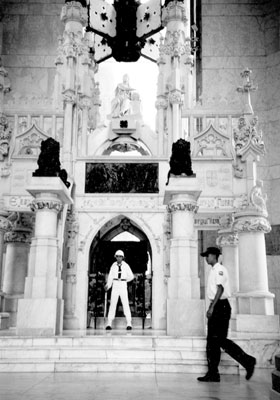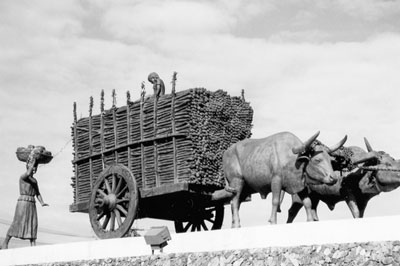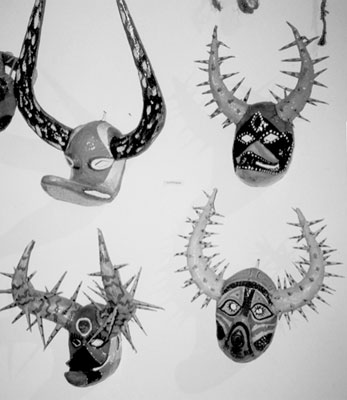Travels in the Dominican Republic
My husband, Joe, and I traveled to the Dominican Republic and Haiti, Feb. 2-11, ’04, to complete visits to all the nations of the Western Hemisphere. We made Internet arrangements with Alyssa Johnson of SAS Travel & Tours in Santo Domingo (e-mail agencydr@yahoo.com) for a 10-day trip encompassing history, culture and ecology. Included was a 3-day trip around the country and to the Haitian border. Our excellent driver/guide for all 10 days was Severino Polanco, a 6'5" former national basketball player and policeman, now running his own travel business.
We had read ITN reader Greg Stathakis’ write-up on the Dominican Republic (Nov. ’03, pg. 82), noting that he was there in December ’02. We certainly agree with him that the people are wonderful and the music and dancing and color make a most enjoyable time. However, we found that the economy is nearing a crisis.
A year ago the exchange rate was 17 pesos to the U.S. dollar, but on Feb. 4 I received 52 pesos to the dollar.
The electricity all over the nation has been in chaos for several years — a long, involved story — and now seems unfixable. If you go, be sure to take a flashlight, since you never know when there will be lights. Even many stores have hand-crank cash registers.
I should say that people going to the many luxurious seaside resorts will probably have no problems since most resorts and hotels and wealthy neighborhoods have their own generators or inverters as well as water supply. The country’s water supply is sporadic, so many people have cisterns and large water containers on the roof for gravity feed.
When driving, be aware that traffic lights are often out, so the police must direct traffic (amazingly, five lanes of traffic can squeeze into the space of three lanes). Also, lately, there has been a shortage of diesel fuel.
With all these caveats, we still had a most enjoyable time. Anthropologist and historian Dr. Lynne Guitar, an American, showed us the UNESCO World Heritage Site colonial zone of Santo Domingo, including many “firsts” of the New World: the first fort, first jail, first monastery, etc., as well as the first cathedral, still in use.
Christopher Columbus first landed in December 1492 and brought his family there on subsequent voyages. The impressive 7-story lighthouse El Faro a Colón holds the tomb of Columbus.
An excellent museum we visited was the Museum of the Dominican Man, which had many amazing Carnival costumes and masks. We were there at Carnival time and mask copies were on sale on the streets. We’d been planning to see two other museums, but they were closed due to lack of electricity.
Alyssa had arranged a diverse itinerary that included a small train trip five miles around the excellent botanical gardens, considered one of the top 10 in the world, as well as the National Aquarium and, toward the east coast, Altos de Chavón, which is a reconstruction of a 16th-century Mediterranean village that is now a museum and art colony. It has an impressive 5,000-seat amphitheater that was inaugurated by Frank Sinatra.
Another special highlight was Cueva de las Maravillas, or Cave of Wonder, which has been open only since March of 2003 and has wonderful cave formations plus hundreds of Taino Indian petroglyphs. Four hundred thousand Taino were dead within 40 years of the arrival of the Spaniards, and much of their culture has been lost.
We saw many baseball stadiums, since baseball is the favorite sport, dominoes being second. A small cigar factory was interesting, and one evening we went to the grounds of the excellent El Embajador Hotel to see and hear the thousands of colorful, raucous parakeets that arrive at twilight.
Dr. Lynne Guitar went with us in Severino’s new VW van for our 3-day side trip, making the stories of the areas come alive. We arrived at the town of Dajabon on the Haitian border in late morning and went immediately to the Haitian market in the main plaza. It is, or was, held Mondays and Fridays for the Haitians to bring old clothes to sell and for them to buy necessities such as cooking oil, food, toilet paper, etc.
The bridge over the shallow Massacre River marks the border crossing to Haiti. We had heard of Haitian rebels and were not sure what would happen. Severino talked to the military and we were allowed to walk over the bridge, crossing the yellow line marking the border.
For safety, we went only as far as the Customs house in Ouanaminthe on the Haiti side. There we watched women washing their clothes in the river and young boys making items from the metal taken off bales of clothes sent from the U.S. The border closed at 2 p.m., and literally hordes of Haitians carrying amazing loads (often on their heads) were rushing back and forth. It was a sight we’ll never forget. We went back to our van, and Severino drove out against the tide of people.
After later wading up the Rio Chacuey to see more petroglyphs, we stopped at Puerto Plata to take the Teleferico (funicular) to the top of Mount Isabel, 2,500 feet. The views over the coastline were spectacular. We stayed overnight in funky Caberete, one of the world’s top windsurfing areas, and then had a boat cruise through Laguna Gri-Gri past massive mangrove trees and along the coral coastline.
Driving back to Santo Domingo on the Ruta Turistica through the fertile Cibao Valley and on the ridge tops of the hills, we enjoyed seeing tiny houses with brilliant colors, some purple and bright blue, some flaming red and yellow. Clothes were drying on the barbed-wire fences next to trees in full bloom and donkeys tied nearby.
Along the way were 15th-century ruins, cockfight arenas and, everywhere, discos with merengue and salsa music.
In 10 days we had traveled over 700 fascinating miles in the Dominican Republic. Alyssa of SAS Travel had provided us the small, interesting hotels we requested along with daily breakfast and lunch or dinner, and all tours with car and driver/guide (and sometimes a special guide) for a total of $1,700 for the two of us.
We learned as we were leaving the island that the Haitian border had been closed indefinitely, almost behind us, so we were most fortunate in all our adventures there.
MARGO SPEARS
Reno, NV



